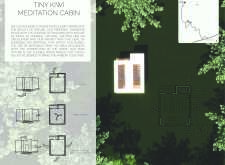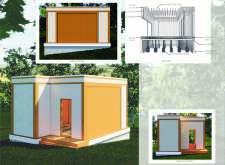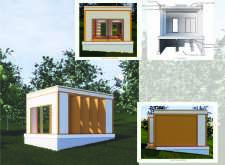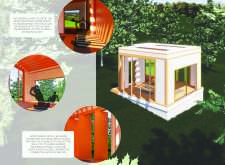5 key facts about this project
The Tiny Kiwi Meditation Cabin is designed as a peaceful retreat within a natural landscape. It serves as a space for meditation and reflection, encouraging users to connect with their surroundings. The design focuses on creating a calm environment with abundant natural light and fresh air, emphasizing the importance of nature in the experience.
Spatial Flexibility
Flexible wood panels are the main feature of the cabin, allowing plenty of interaction with both the inside and outside spaces. Users can adjust these panels according to their needs, creating variations in how the space is used. This adaptability makes it possible to enhance airflow and sightlines to the exterior, effectively blending the cabin with its environment.
Material Considerations
The cabin uses wood panels selected for their functional and aesthetic qualities. These panels are designed with a 360-degree hinge mechanism attached to a metal rod, allowing them to be easily moved. This thoughtful choice of materials supports the goal of enhancing the sensory experience while respecting the natural setting.
Environmental Integration
The cabin is designed to work well with its surroundings, using locally sourced materials and considering its geographical location. By aligning the cabin with the landscape, it respects the local ecology while promoting a closer connection to nature. The layout maximizes sunlight and allows for effective air circulation, improving the overall experience for users.
The design detail of flexible panels highlights the cabin's goal of creating an interactive and engaging atmosphere. Walls that can open or close in response to changing conditions invite users to engage with the shifting environment outside. This adaptability makes the cabin a space of refuge, linking the indoor experience to the natural world in a meaningful way.





















































